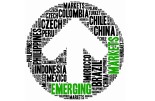PGIM Fixed Income: EMD biedt aantrekkelijke kansen
PGIM Fixed Income: EMD biedt aantrekkelijke kansen

By Cathy Hepworth, Head of Emerging Markets Debt at PGIM Fixed Income
Growth prospects might appear to be challenging for developing economies across Asia in the midst of China’s economic slump, higher-for-longer interest rates globally, and increased geopolitical tensions. However, for those seeking portfolio diversification with potential upside, emerging markets debt currently offers a range of attractive investment opportunities.
One of the attractive features of investing in emerging markets debt—in addition to low correlation with other asset classes, like today’s high-flying (and higher risk) equities—is the ability to invest across segments that often react differently to various macroeconomic environments, allowing managers to allocate capital against the most appropriate benchmark.
This broad diversification and inherent dispersion across sectors provide tremendous opportunities for investors. However, there is no single best performing sector in emerging markets. Active investors therefore should have as much flexibility as possible to create a blended portfolio. The more tools a manager is given to express their views in the market, the higher their alpha target can be, likely leading to better risk adjusted returns.
So, what should an emerging market blended portfolio look like?
Capital should be allocated to take advantage of the three distinct return streams within emerging markets: hard currency (sovereign and corporate) debt, local interest rates, and currencies. In order to construct the most robust portfolio, an understanding of how each of these segments have performed over time, and how an investor would benefit from allocating to each position as economic climate waxes and wanes is a crucial first step. The performance characteristics of the different EM debt segments can differ dependent on the macro context.
Attractive carry
Hard currency sovereign and quasi sovereign debt—bonds issued by countries or state-owned enterprises mostly in the US dollar — generally do well in “risk on” markets and stable higher rate environments. This is also a sector that is diversified enough to allow select performance in more volatile markets.
Taking this into consideration, this is an area we are constructive on against the current backdrop of moderating growth and inflation. The current carry, meaning the additional compensation an investor can expect above the 10yr US Treasury, offered in hard currency is clearly attractive.
Sovereign yields are near 8%, providing a cushion for any near-term spread volatility or potential rise in US Treasury yields. And in the event of additional spread tightening or Treasury yield compression, returns could be pushed to double digits.
Hard currency corporates historically have characteristics that are noteworthy, especially during a time where global growth is uncertain, is they are generally shorter-duration bonds that tend to outperform in volatile markets. A selective approach to these bonds can offer idiosyncratic opportunities with attractive relative value in high growth economies. And if global growth declines, holding bonds from strongly rated emerging market companies can outperform in a volatile and risk-off market.
In slowing global growth markets, hedged EM local rates can perform well, offering attractive real yields with steep curves as interest rates are taken down in order to boost growth. In this dynamic, a slower global market would normally strengthen the US dollar and hurt emerging market trade volume.
However, local market performance may be challenged unless the Fed begins cutting rates in either May or June and EM inflation data improves materially. Nonetheless, over the medium term, the carry and rolldown (the capital gain created by the fall in yields as the bond approached maturity) offset the negative impact from emerging market foreign exchange.
The differential in growth between developed market economies and emerging market economies has a strong influence on emerging market foreign exchange (EMFX) trading. Inflation is falling faster in emerging markets than developed markets, and emerging market growth should benefit as central banks begin to cut rates. As some countries race ahead and others fall behind, relative value opportunities emerge.
A proper asset allocation
With these three return steams in emerging markets in mind and a better understanding of how they perform in different macro contexts, it’s important for investors to understand what proper asset allocation and portfolio construction looks like.
To achieve proper construction, identifying the difference between strategic and tactical allocations is critical. The long-term strategic cornerstone of a portfolio should lie in hard currencies as the returns here are the result of a country’s fundamental trajectory coupled with current valuations. Complimenting that approach, local market allocation should be viewed as tactical as their performance, along with currencies, tend to be more cyclical.
Today’s market provides a great example of this strategic/tactical approach: while we believe there will be value in EMFX over the next few years, we have more confidence in spreads than in EMFX over the long-term. This does provide tactical opportunities in EMFX, but they should not construct the core of an EM portfolio.
Investors should avoid the temptation of investing broadly across EM sectors from a 'top-down' perspective; instead of spending the time to parse through different sectors and geographies from a bottom up perspective is a better way to identify opportunities for added returns.
For example, the best opportunity in one segment may have a lower return potential than the tenth best opportunity in another. While using a simplified top-down allocation or static allocations amongst sectors may be intuitively appealing, it will lead to a suboptimal allocation of assets. A portfolio will produce stronger returns by actively allocating to the highest returning opportunities rather than focusing on a specific sector.









